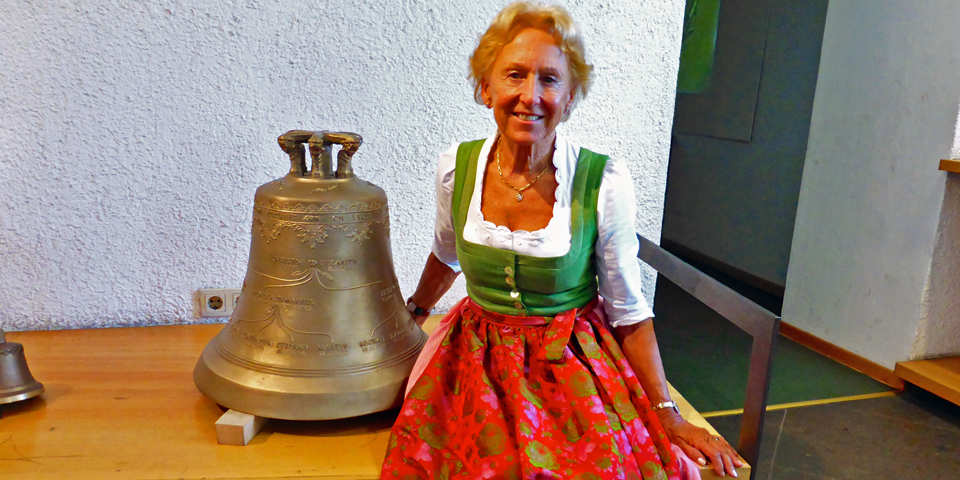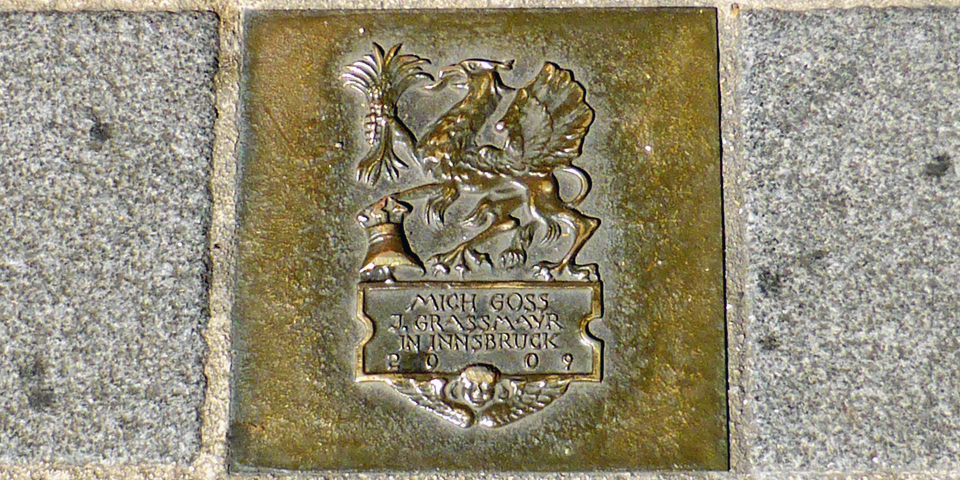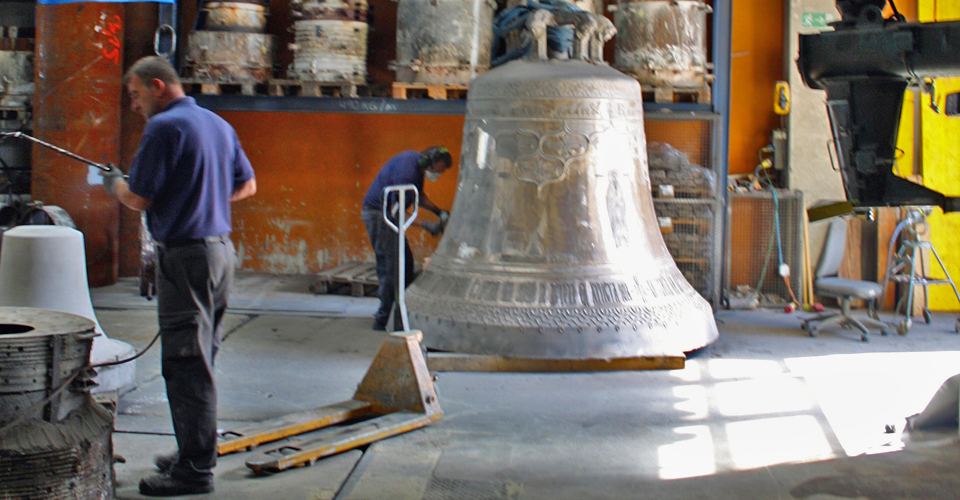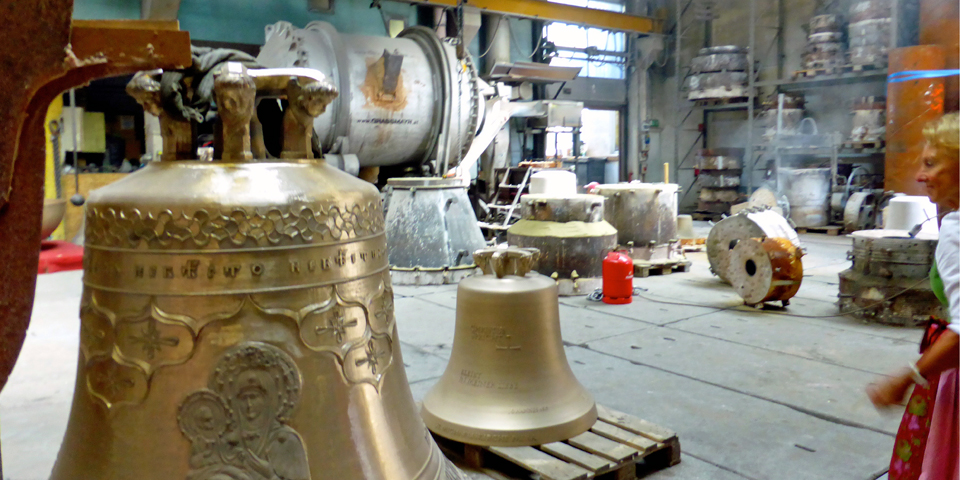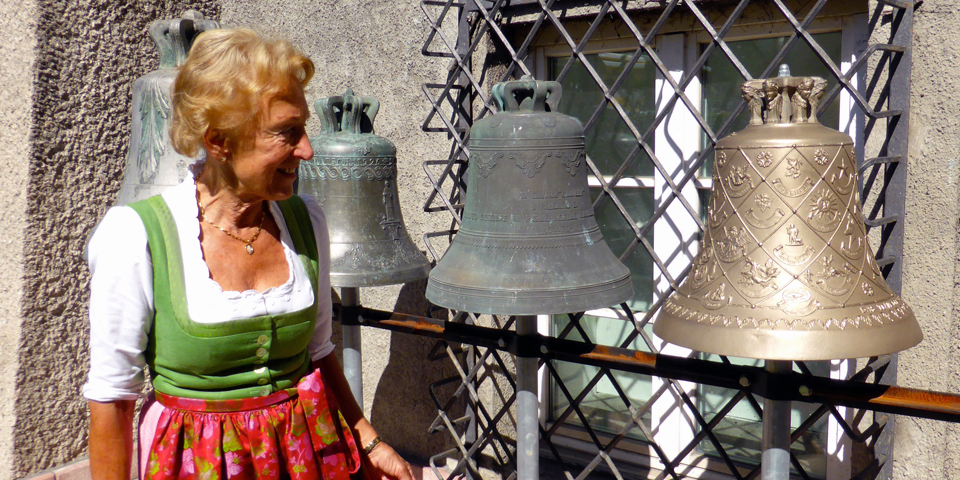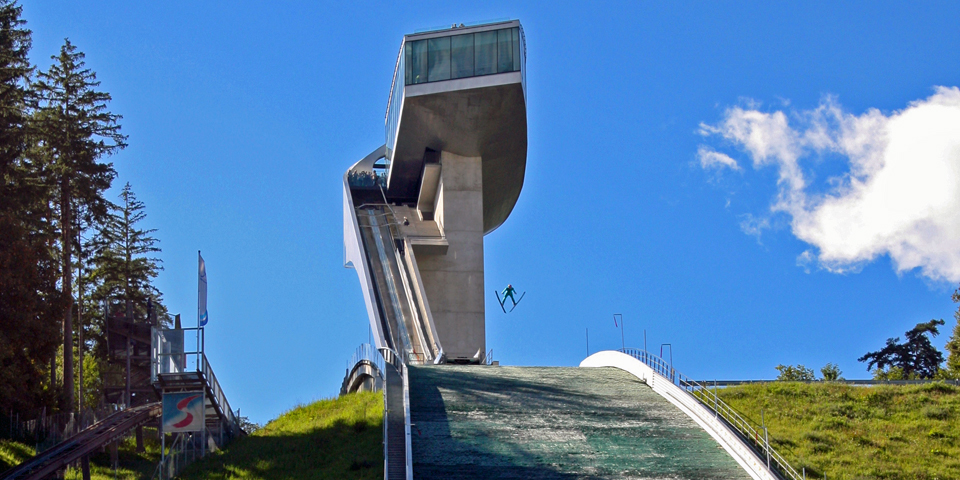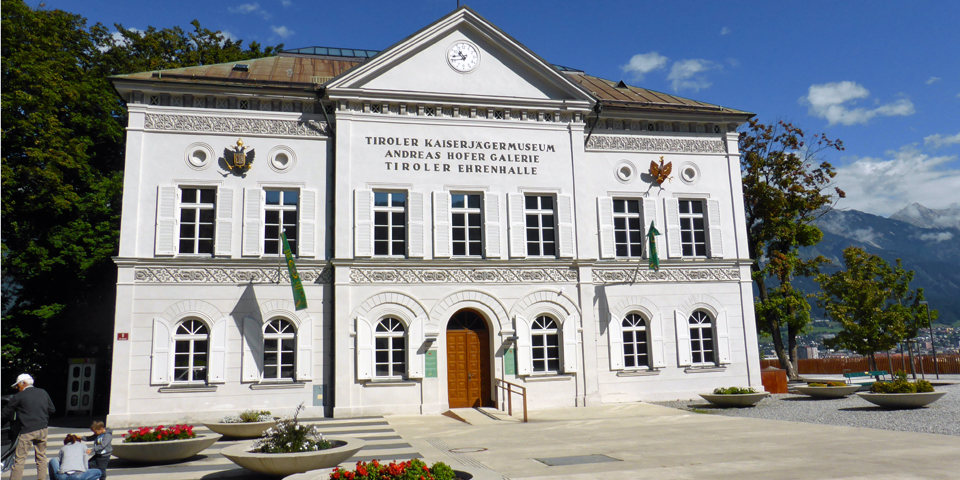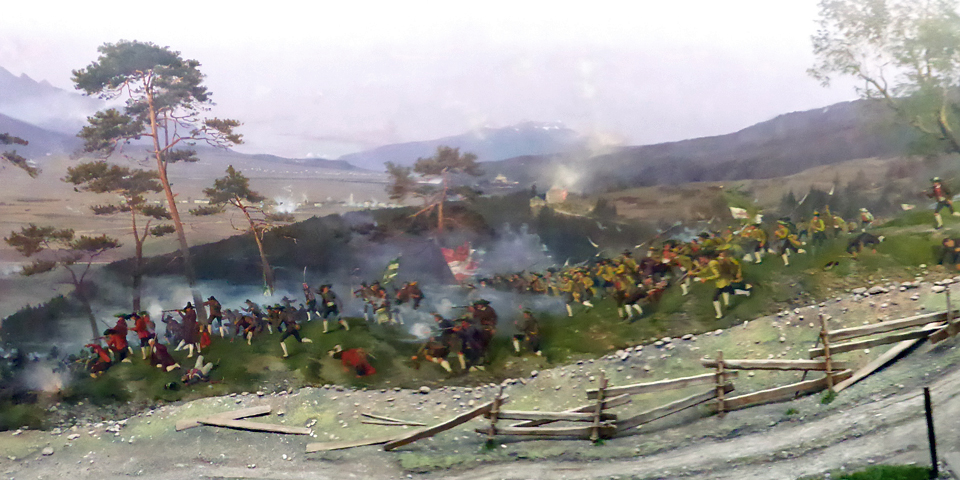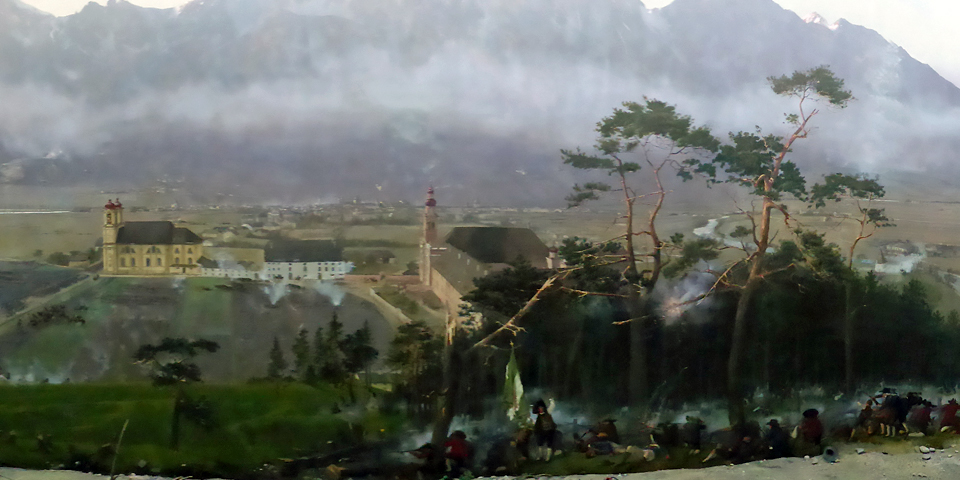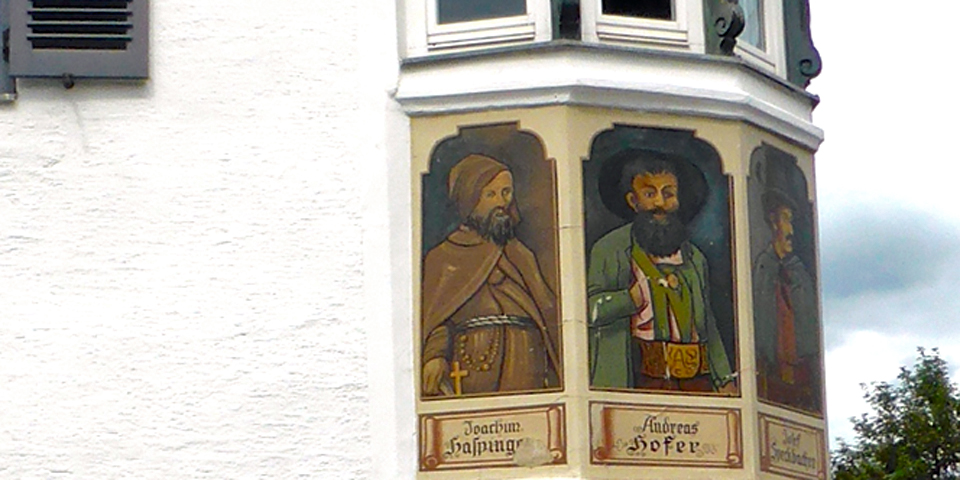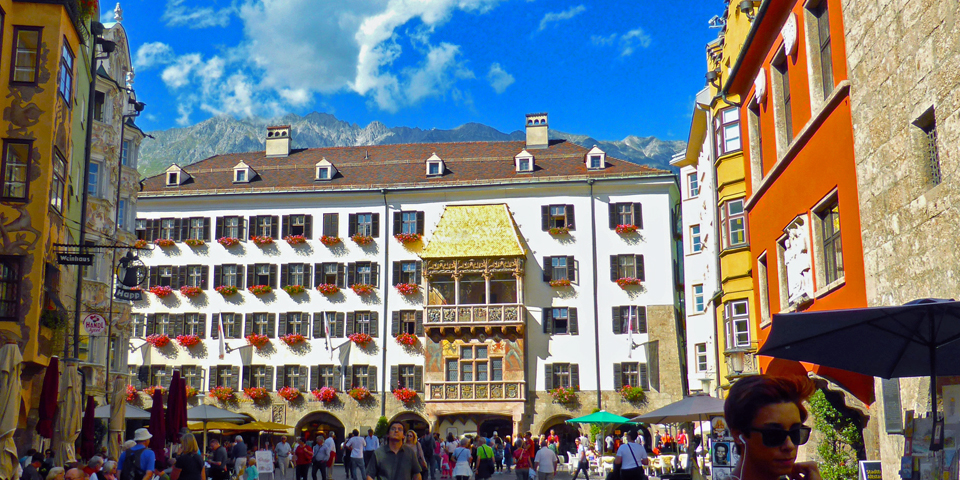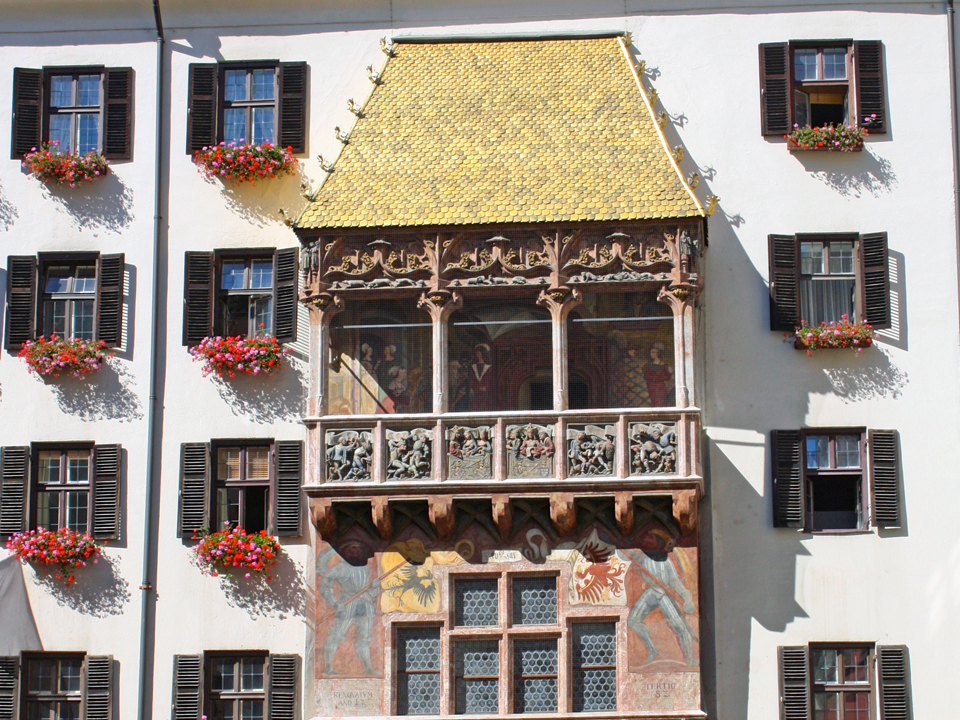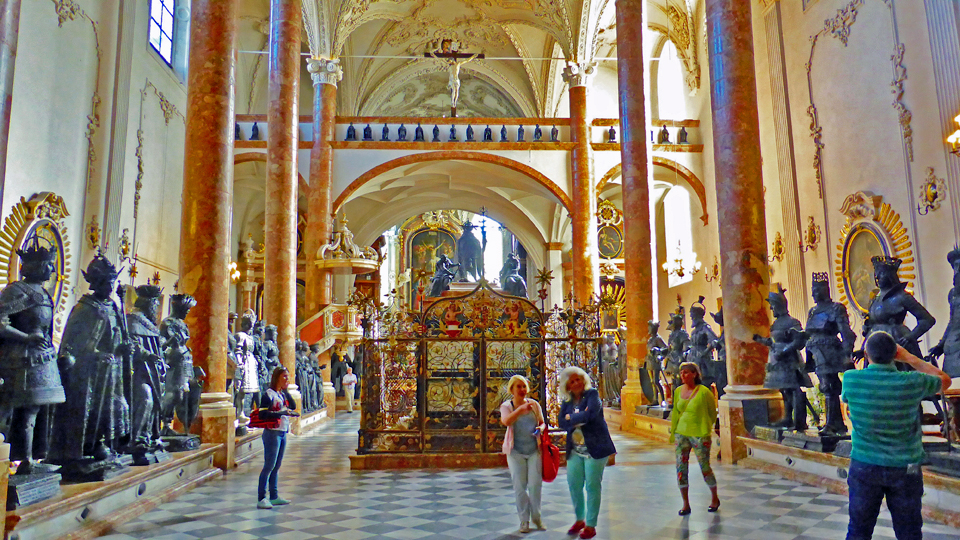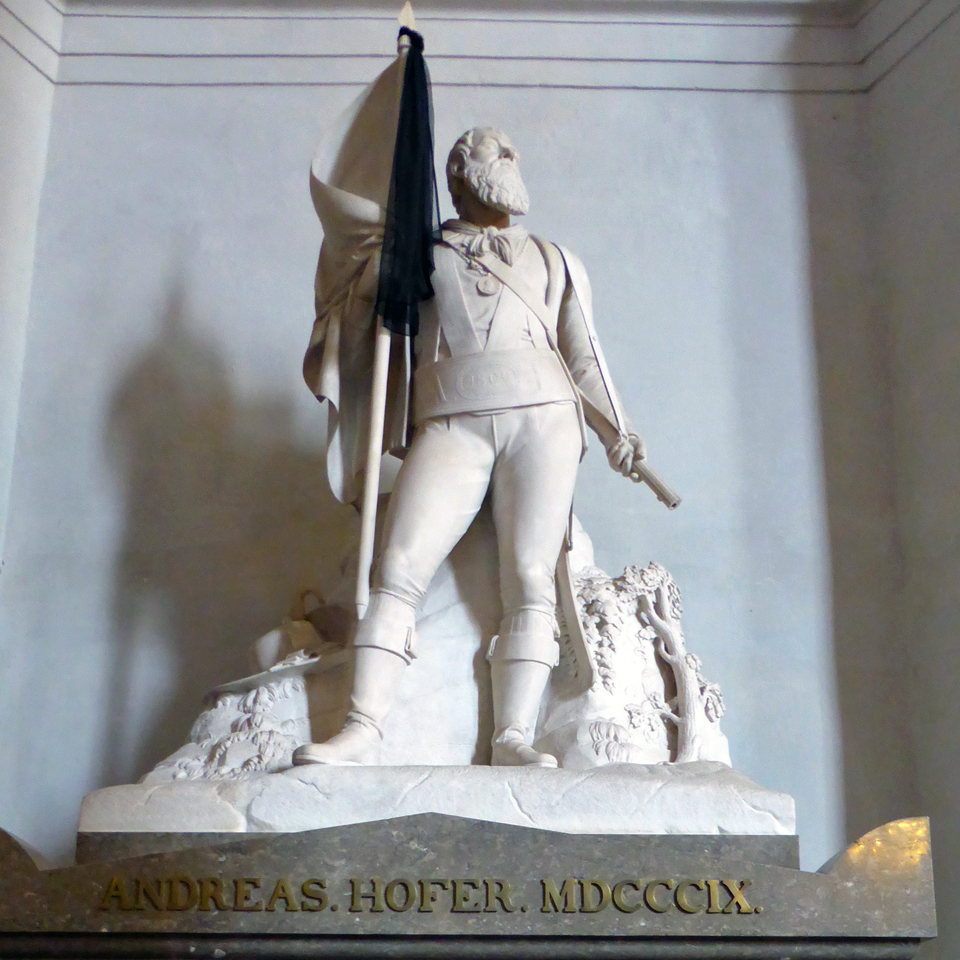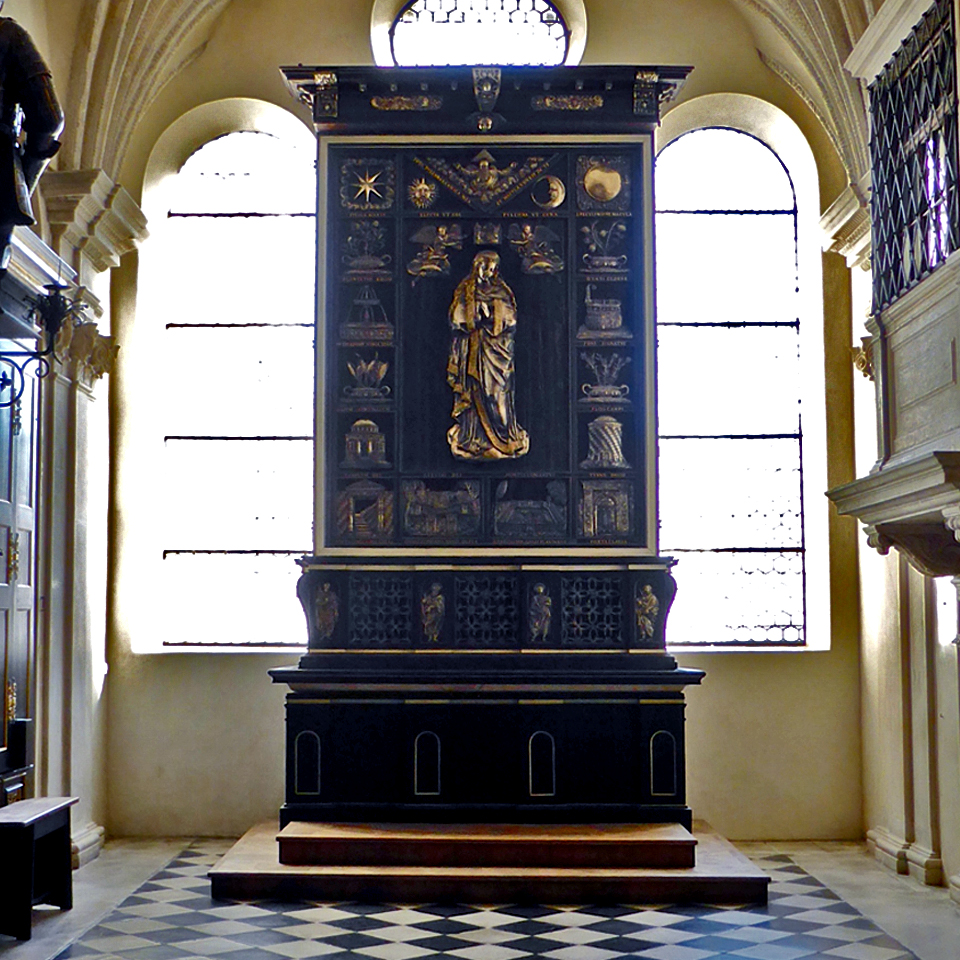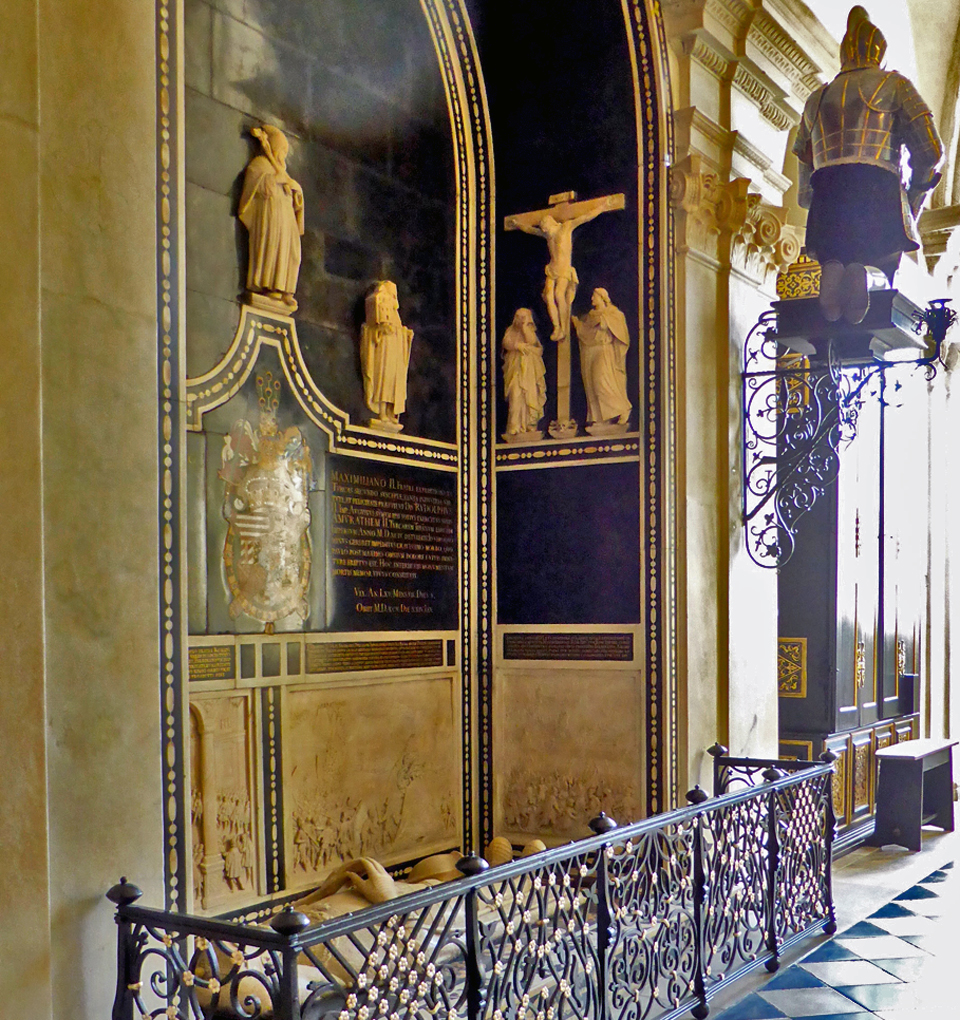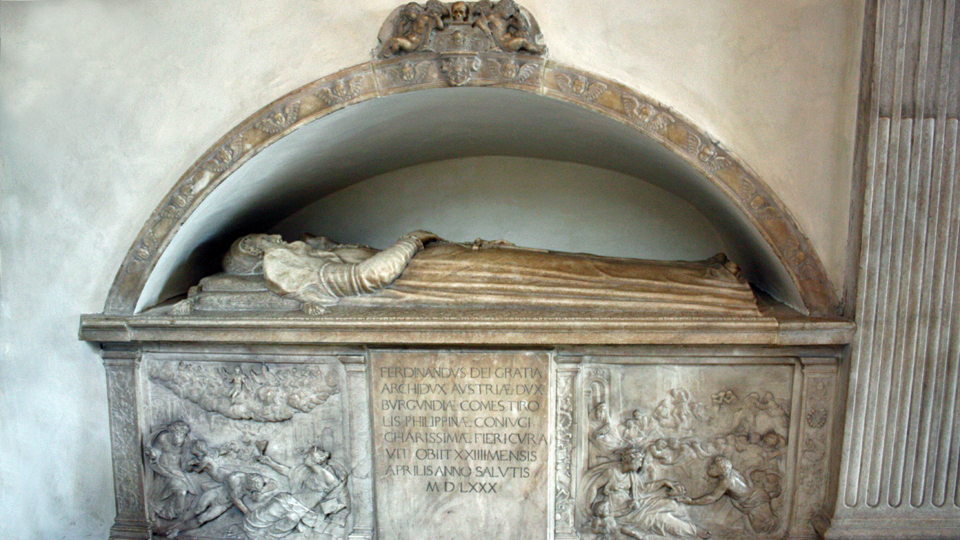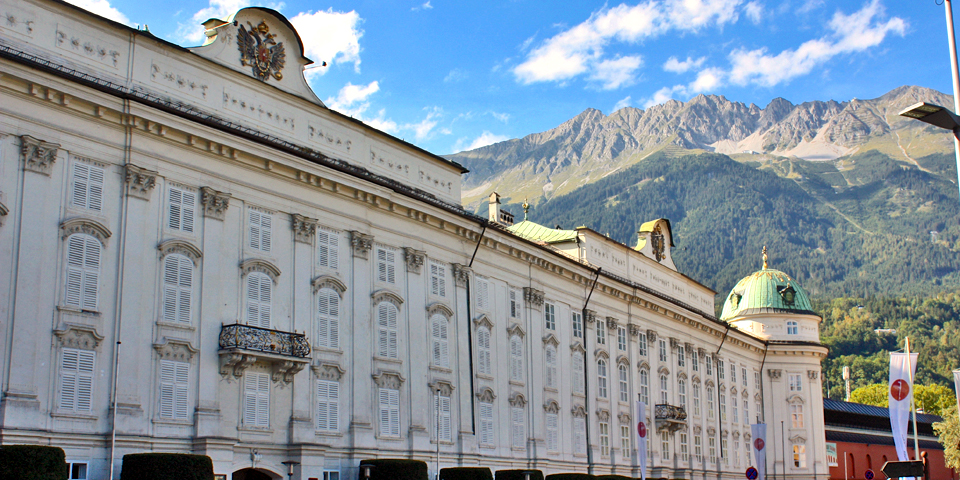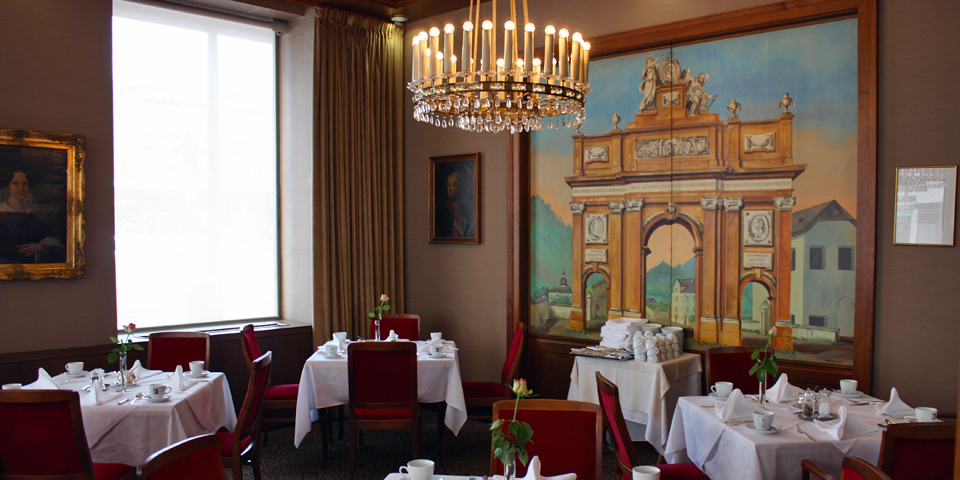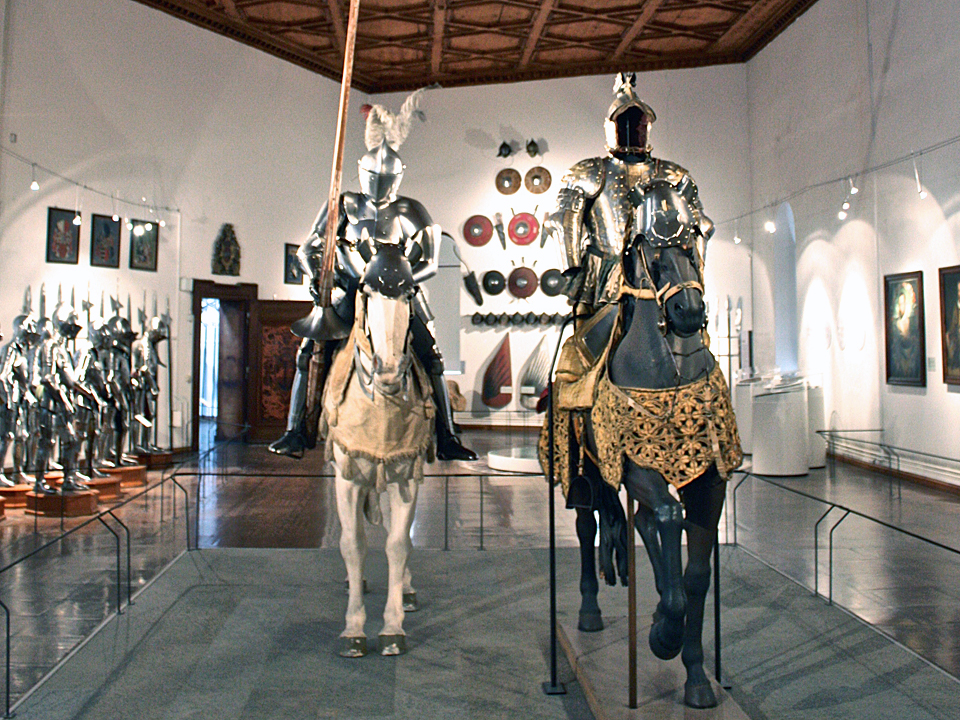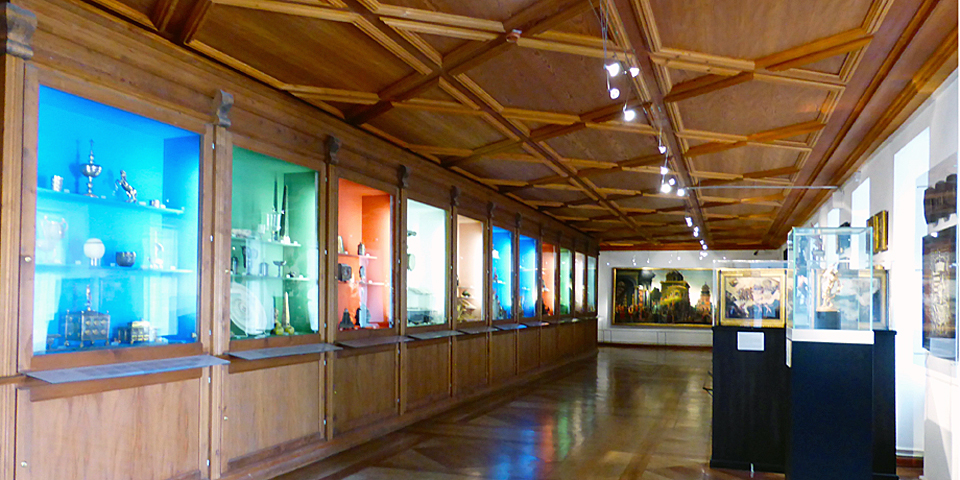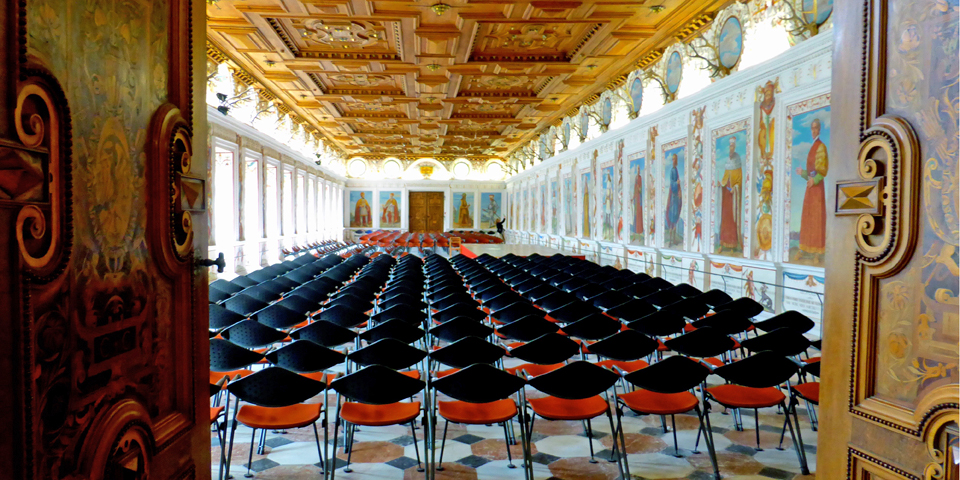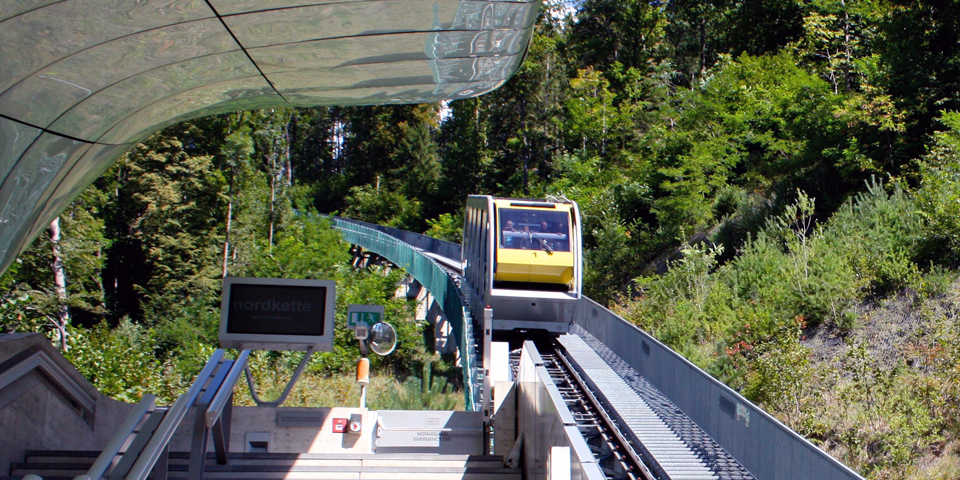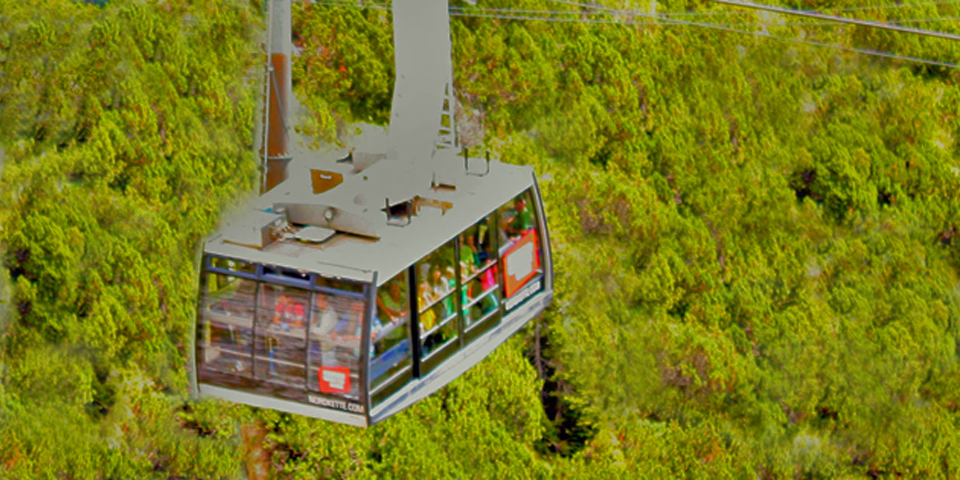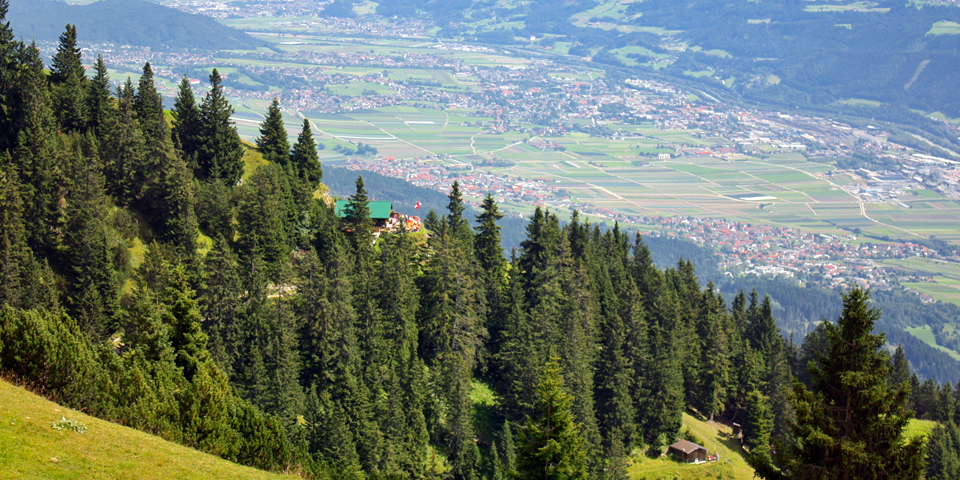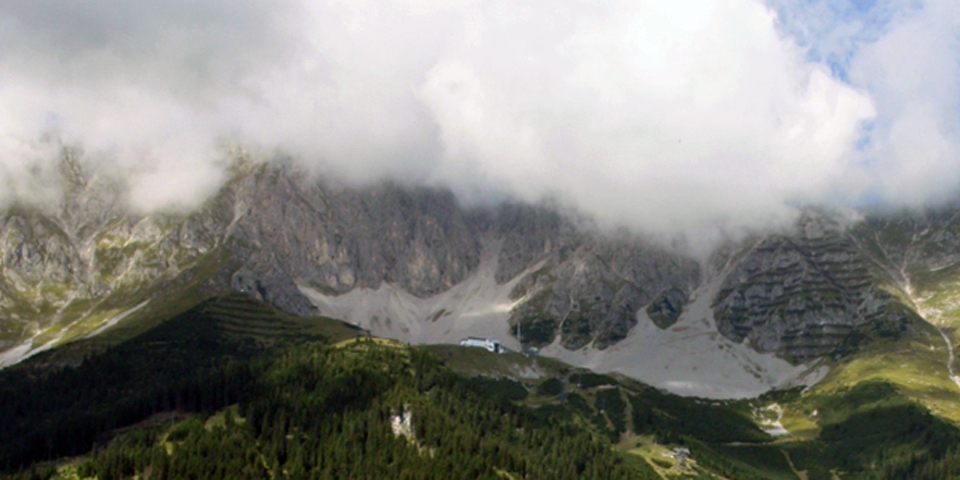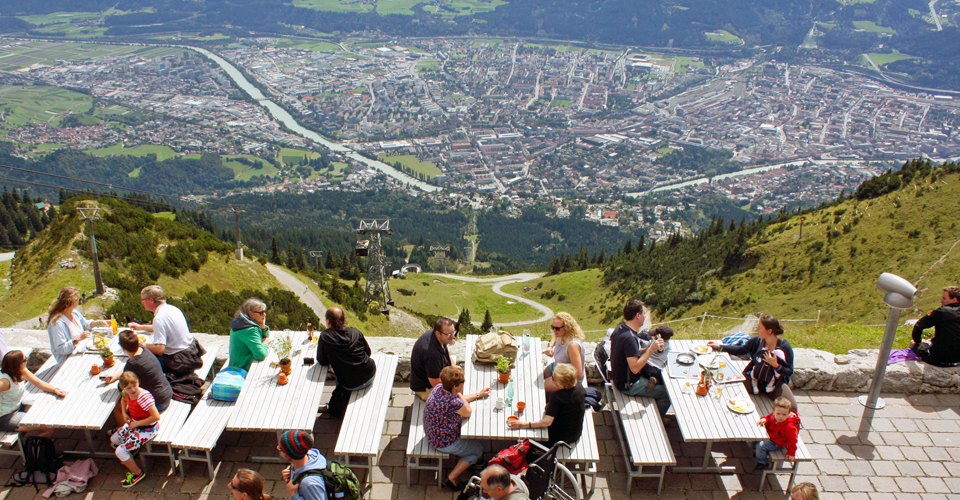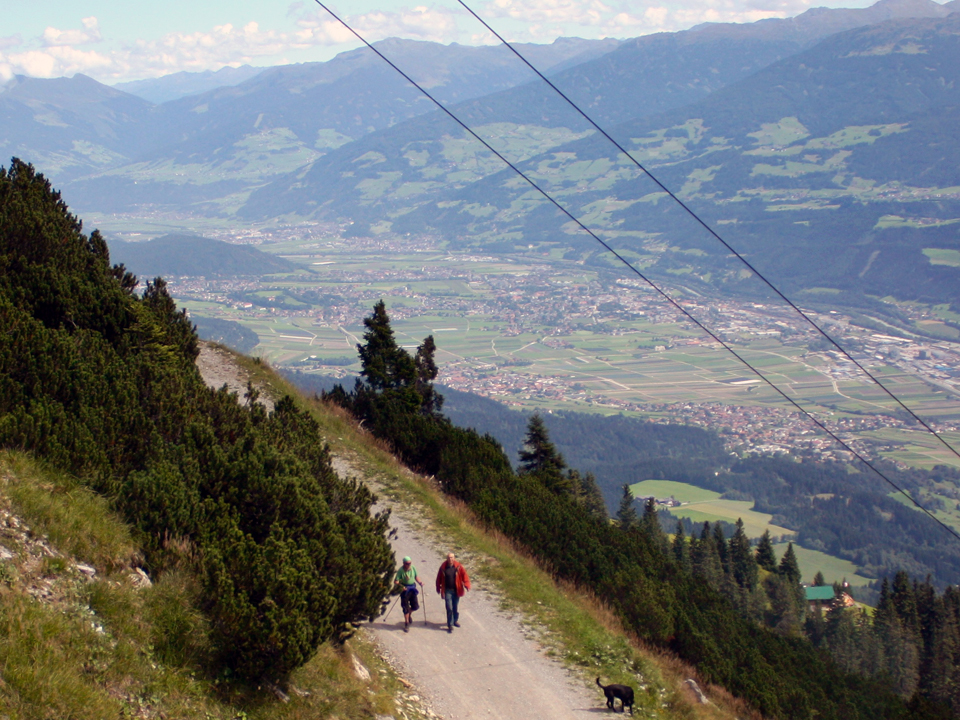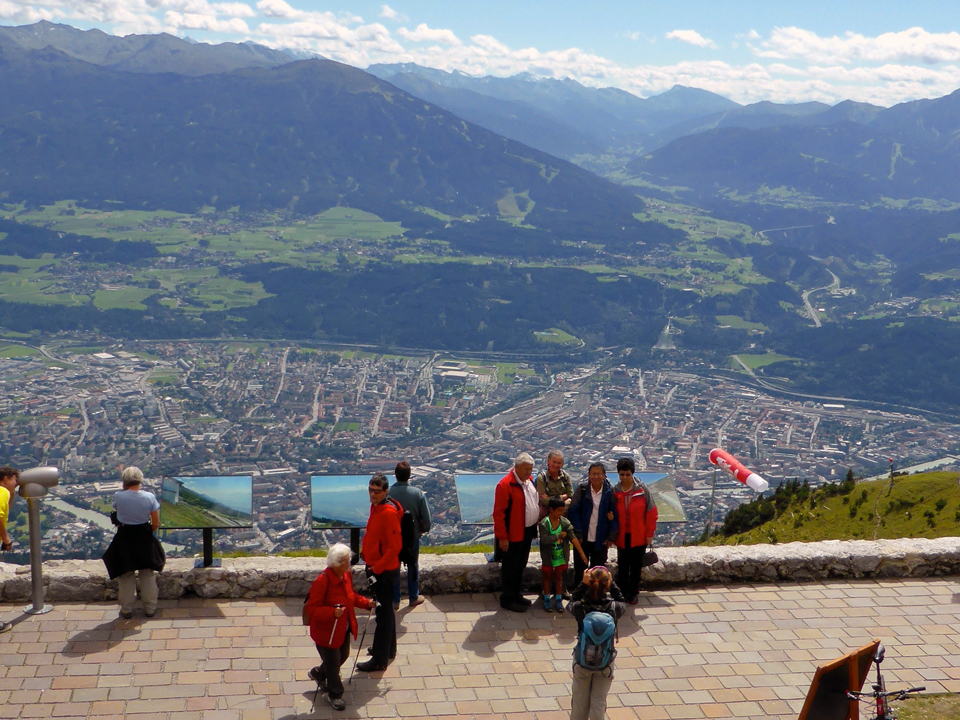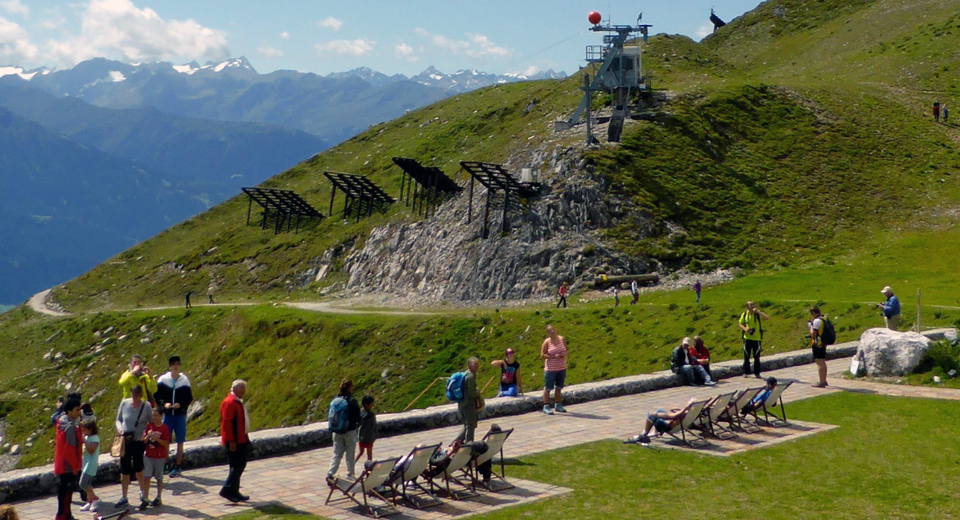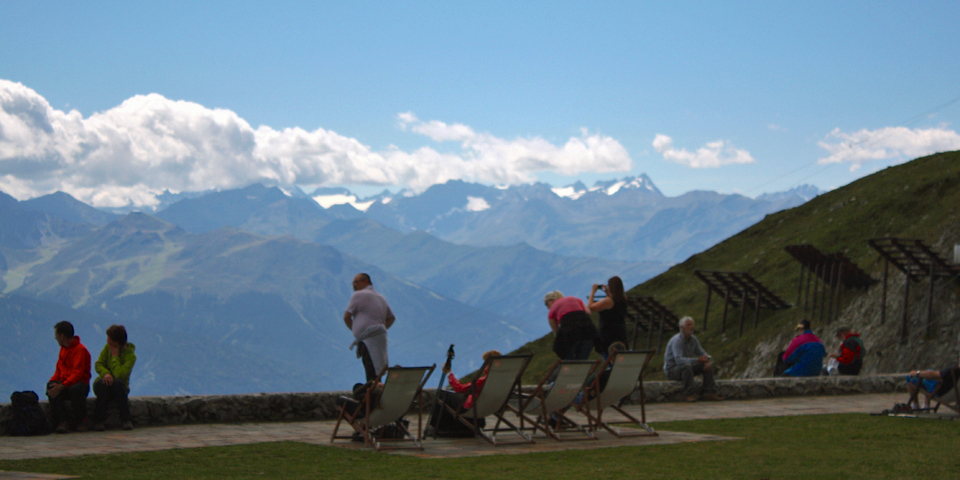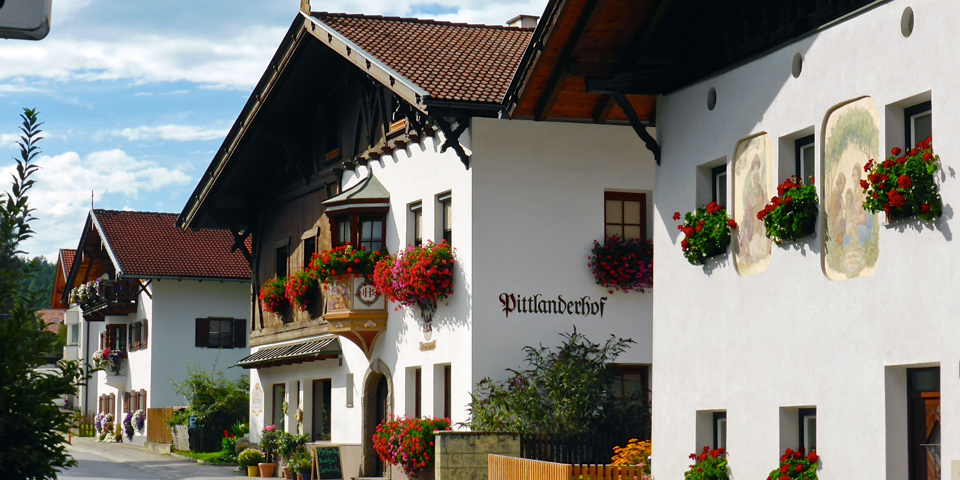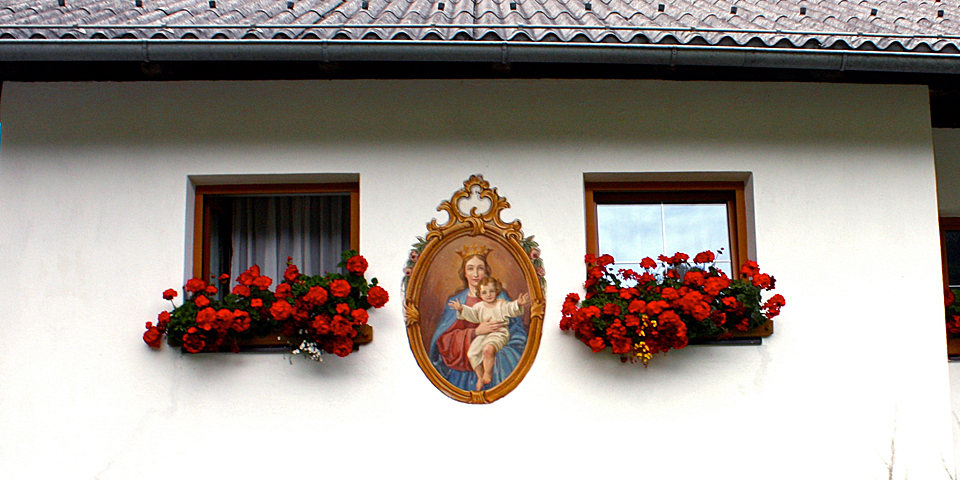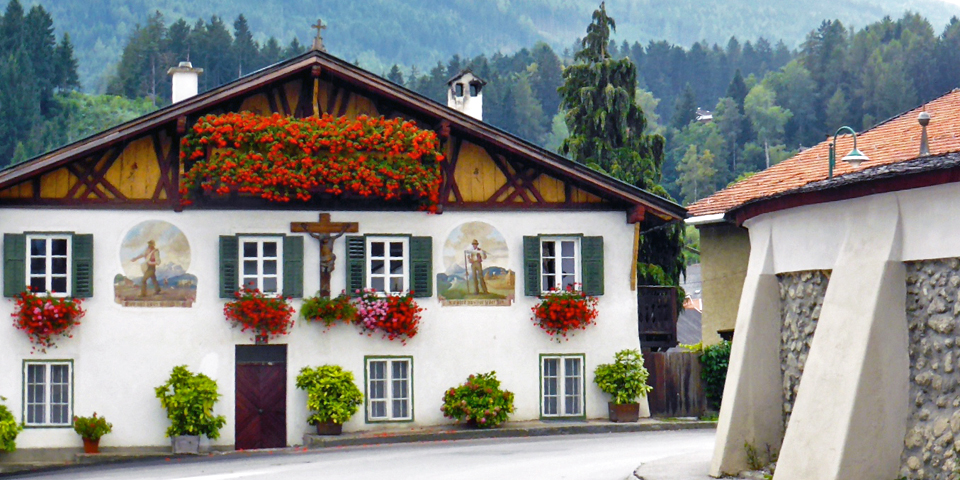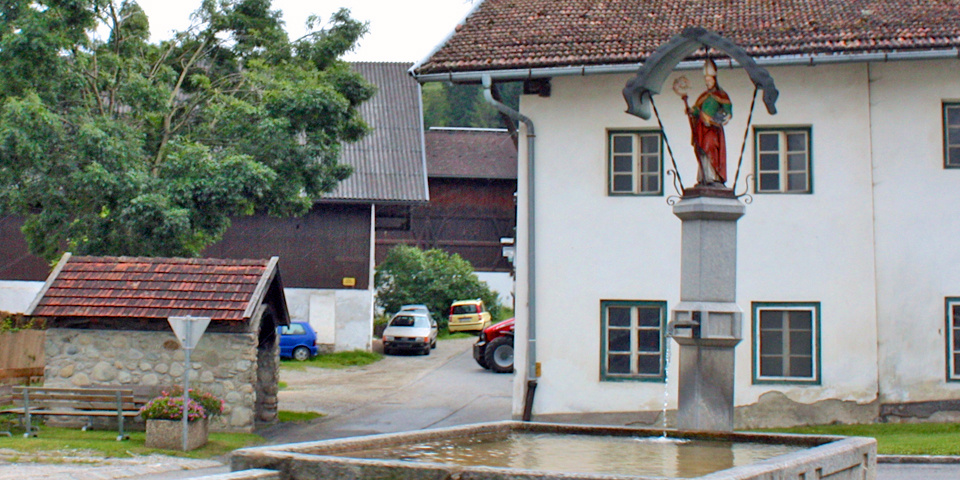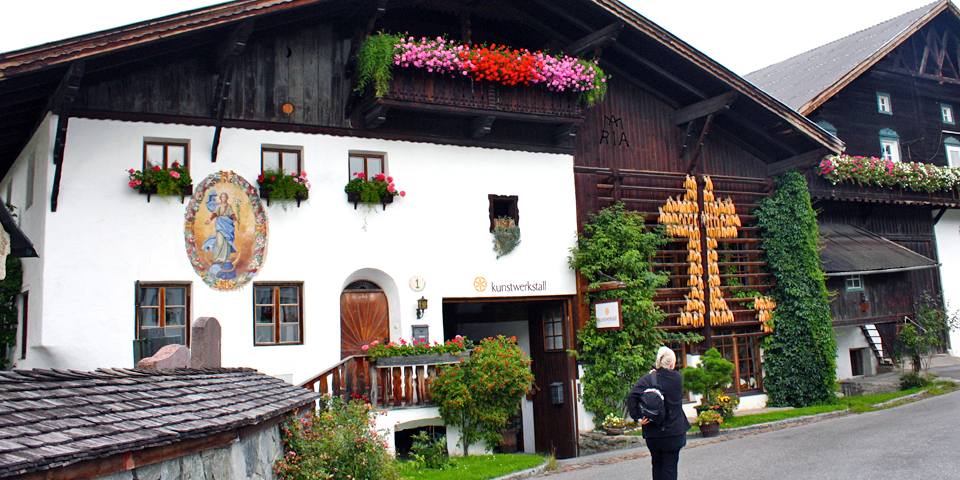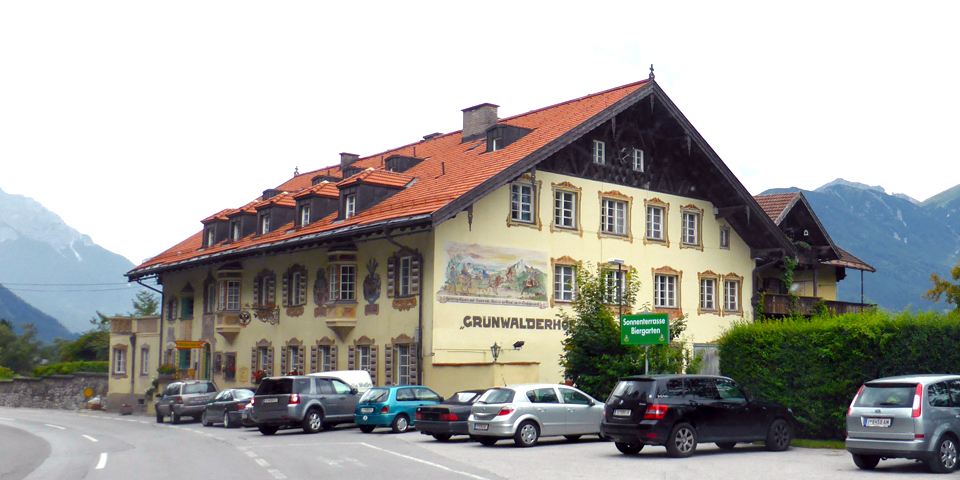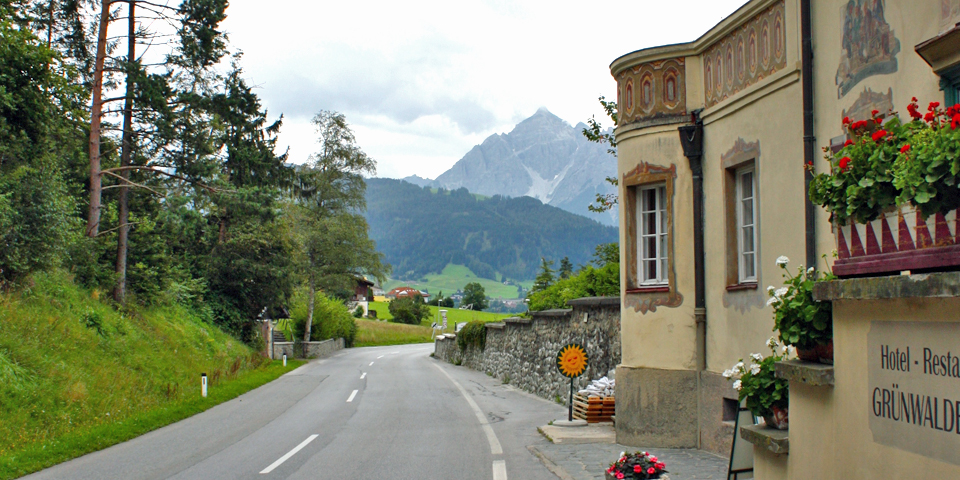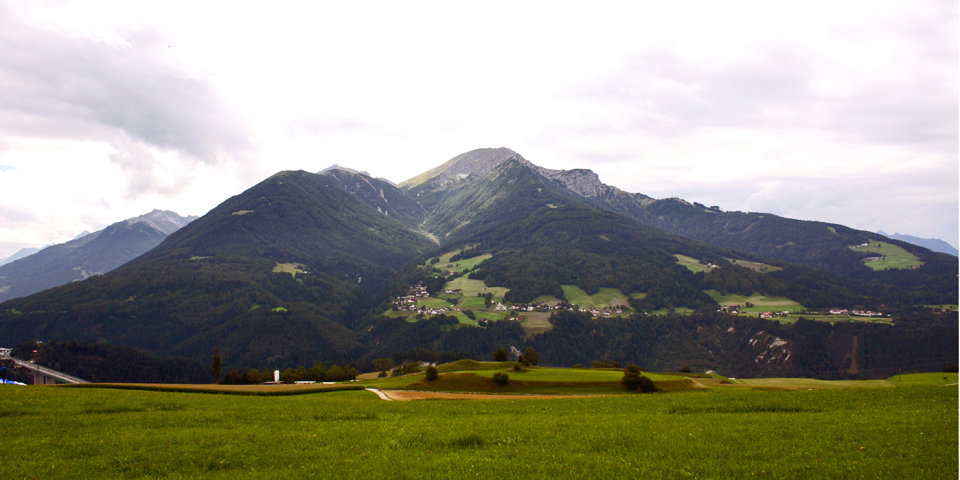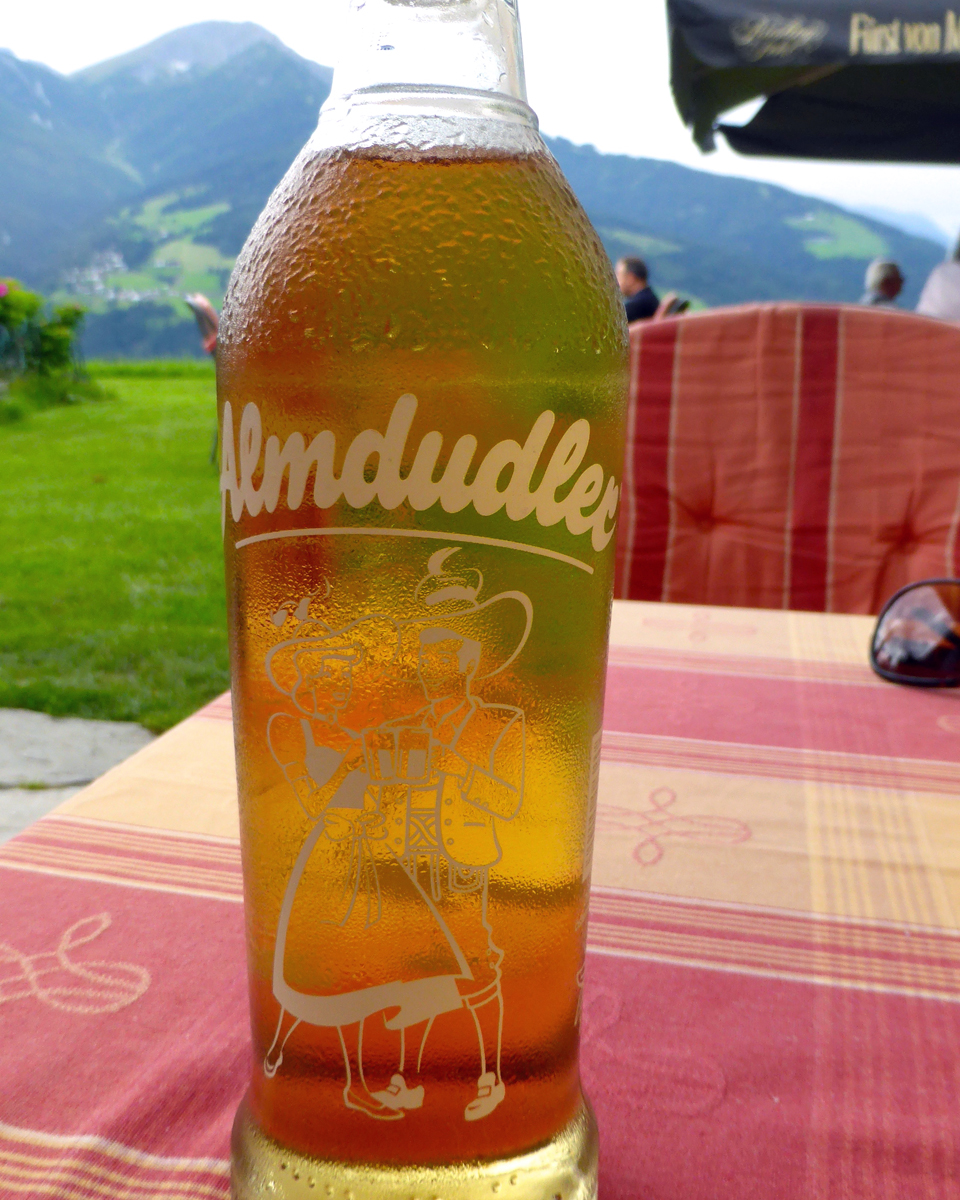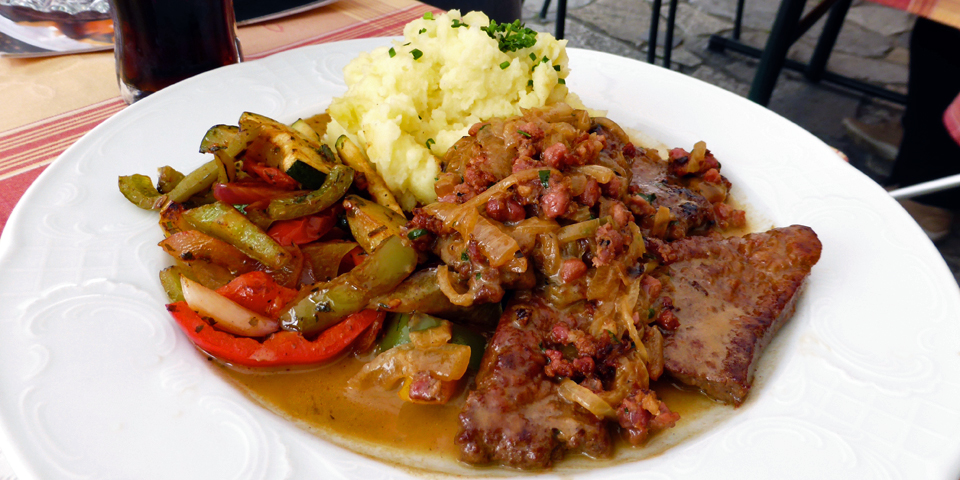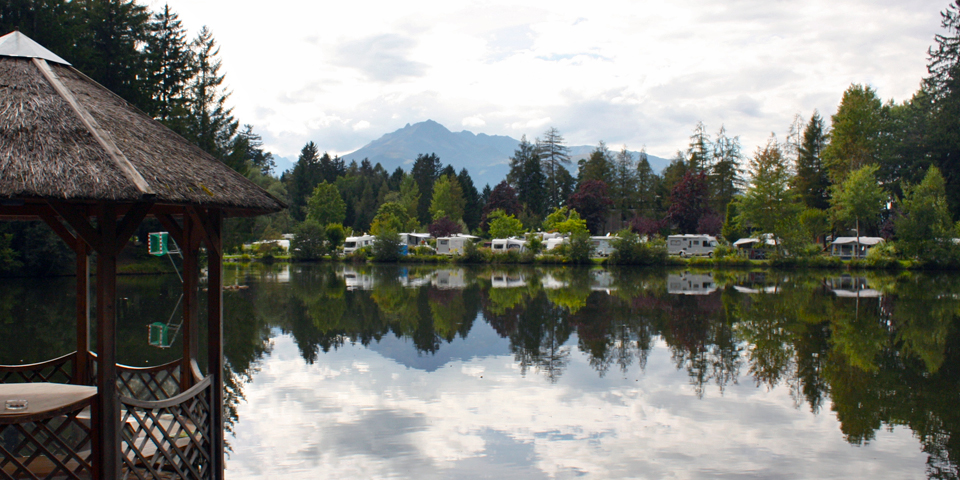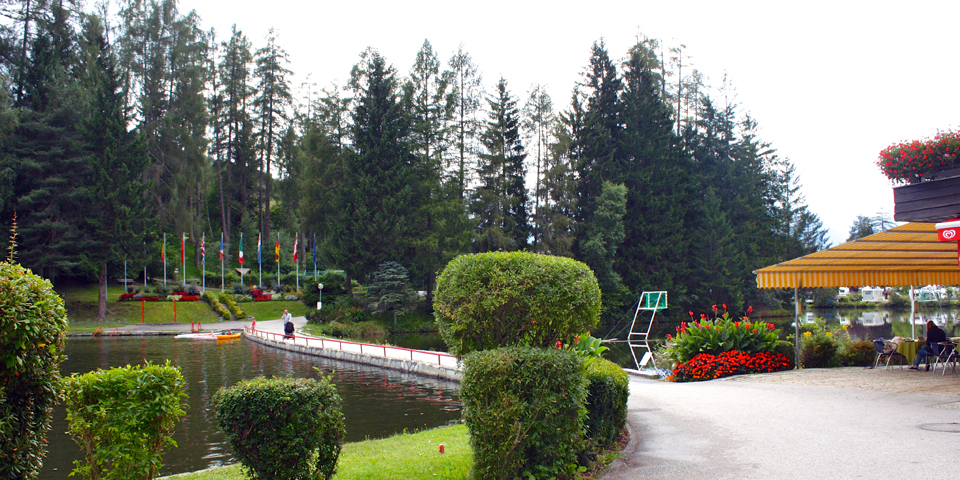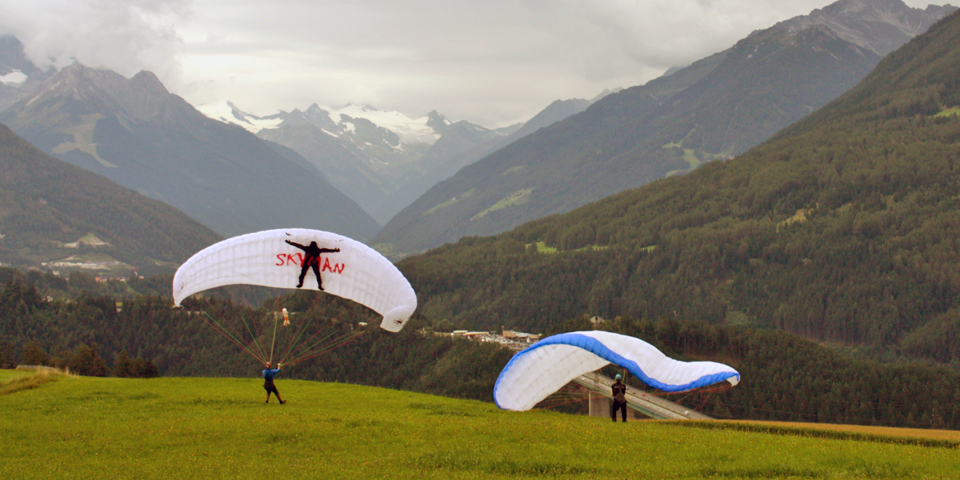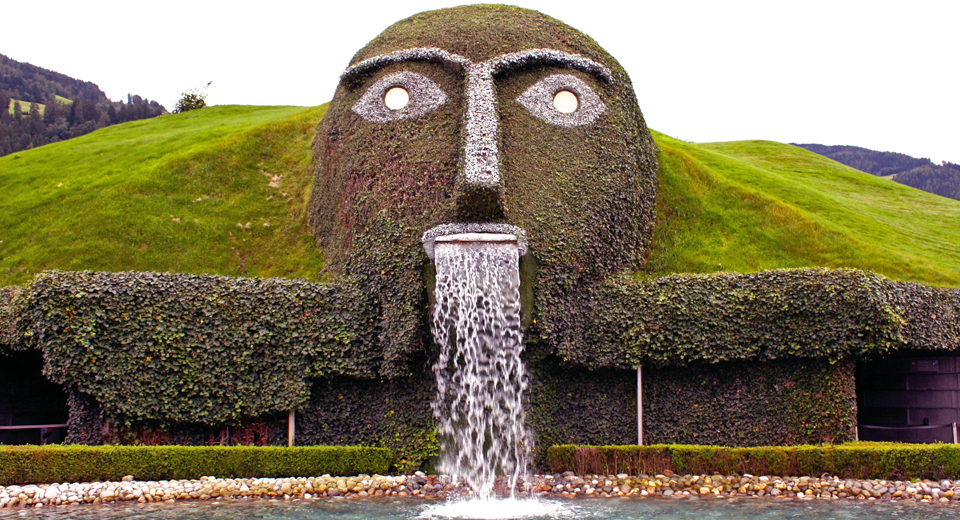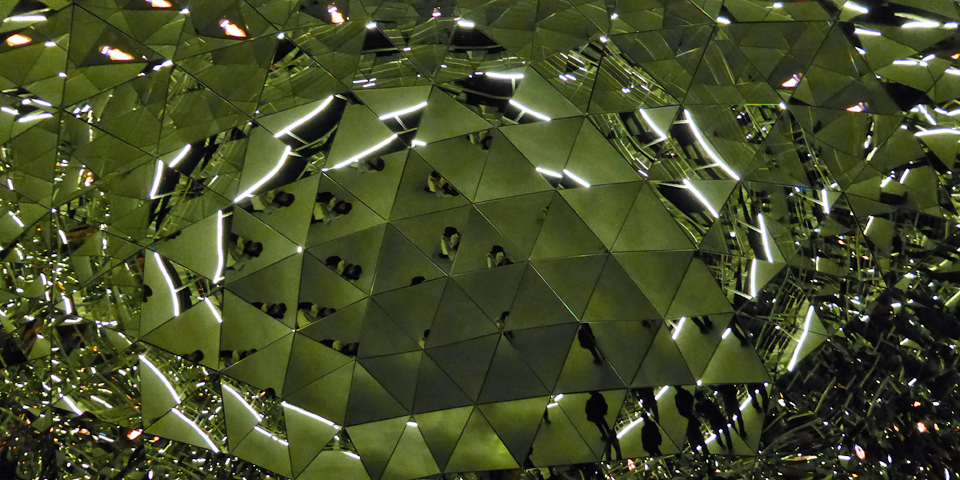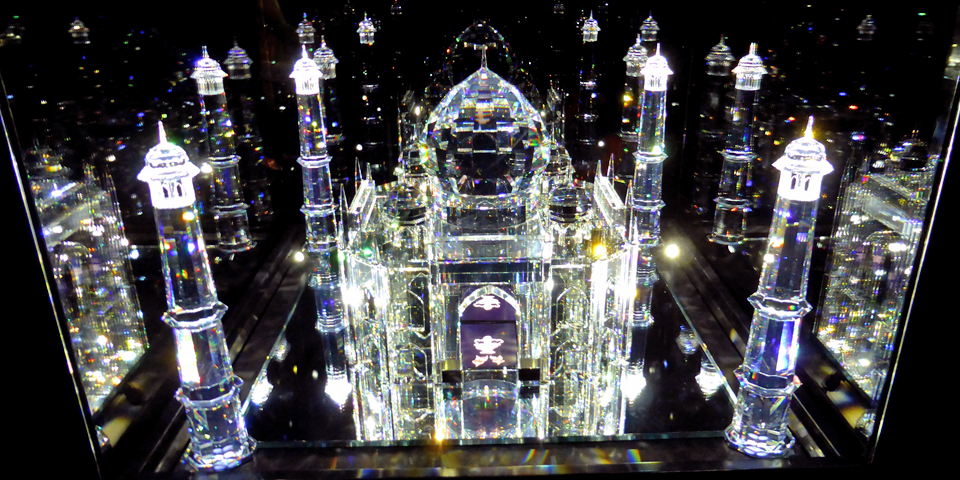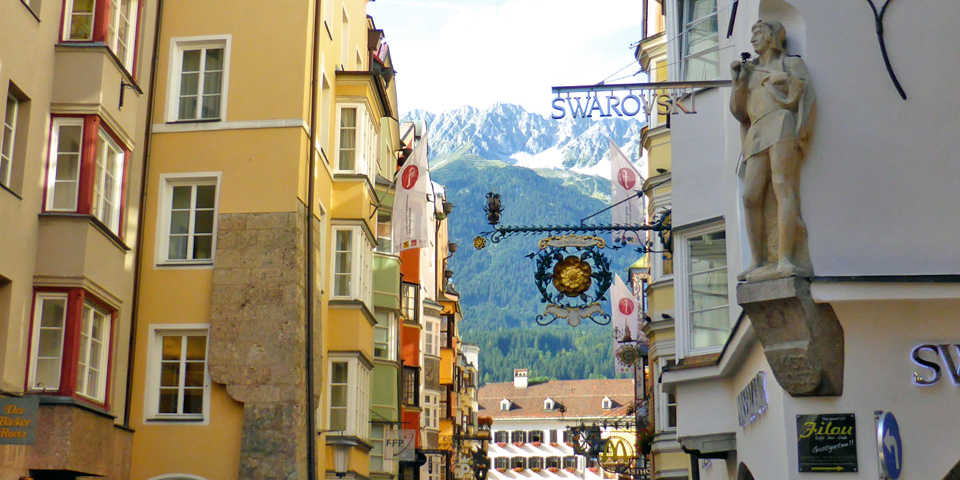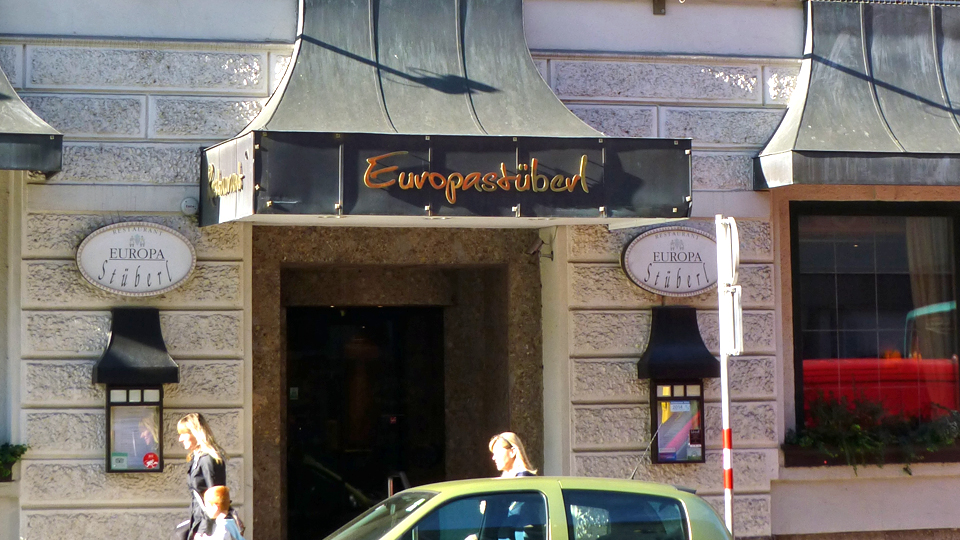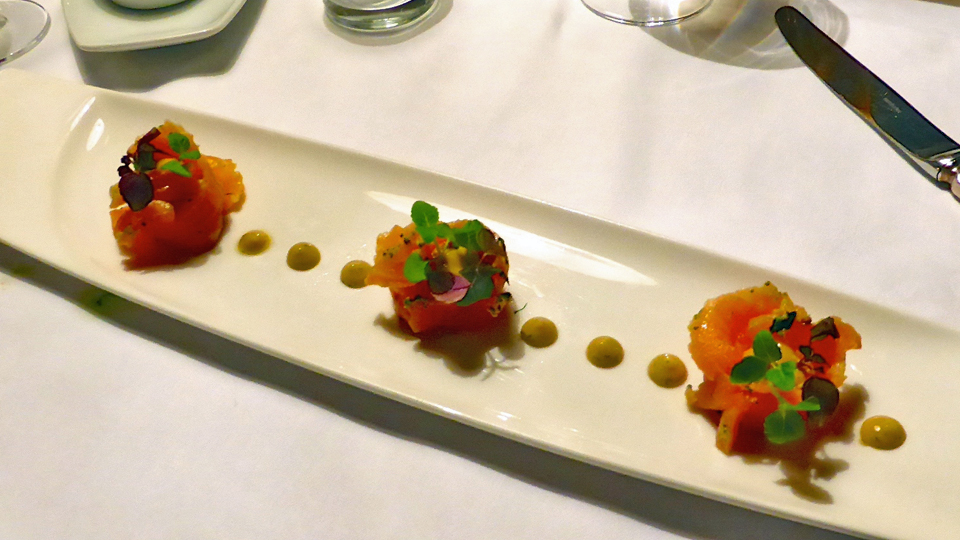Innsbruck, Capital of the Alps, and its holiday villages
Innsbruck, with a name meaning “bridge over the Inn River”, is a city renowned for its alpine scenery and recreation. It gained international recognition as the site of the 1964 and 1976 Winter Olympic Games and 2012 inaugural Winter Youth Olympic Games.
Innsbruck is the capital of Tirol, one of Austria’s nine states. It is the gateway to the Brenner Pass, which connects Germany and Italy, and is one of the most important roads through the Alps.
We arrived in Innsbruck in summer, when there are many special events, like the folklore festivals, open-air concerts, and dance and theater performances. From September into October there are celebrations of Tirolean traditions like Almabtriebe, when cows decorated in flowers and bells are brought down from high altitude summer pastures.
Innsbruck
We visited this Capital of Culture to explore its preserved and storied medieval Old Town and the postcard-perfect holiday villages. When there is much to see we make the best use of our limited time with a knowledgeable guide. We could not have had a finer one than Elisabeth Grassmayr, one of the best ambassadors of a city that one could hope to meet.
Elisabeth Grassmayr with a bell decorated with her family tree at the Grassmayr Bell Foundry, Innsbruck, Austria
The Grassmayr family has been casting bells since 1599 — for churches, cows, houses, clocks, horses, holidays and special occasions — that are used in over a hundred countries throughout the world. Family secrets for crafting all-bronze bells that are acoustic and visual works of art have been passed down for fourteen generations.They have developed their clock bells with such precision that they are also made as musical instruments for use in orchestras.
In 1692, the bishops of Brixen, who ruled over the region, awarded Grassmayr Bell Foundry a griffon as a signet of the quality of their product.
Did you know that there are fifty-eight tones in a properly crafted bell? Visitors can see the process of bell making in the foundry, learn about the art of creating this musical instrument in the museum, and take a hands-on acoustical adventure in the sound room. The Bell Museum was awarded the Austrian Museum Prize by the National Ministry of Culture.
Mrs. Grassmayr arrived at our hotel on our first morning in a freshly-pressed dirndl after cutting her grass and tending expansive garden. Her knowledge of her family heritage and Austrian history runs as deep as her roots, and everyone in Innsbruck seemed to know her.
Our comprehensive tour was personalized with Mrs. Grassmayr’s own family history. Church paintings by family ancestors, the effect os Hitler’s power on family members, wartime food shortages, French occupation of her mother’s house, and family members lost to war were among the unforgettable insights into the history of Austria that she shared with us.
For two days we toured the city and mountains with this septuagenarian whose energy would be the envy of most people half her age. She felt ill once, she said, and had some schnapps, went up to the pure mountain air and returned just fine. Roman Straub, energetic General Manager at The Grand Hotel Europa, told us that the people of Innsbruck are known for such health, energy, and a lifestyle that promotes longevity.
With sunshine and clear skies on our first morning, we headed for the Bergisel Ski Jumping Stadium, designed by hot-shot architect Zaha Hadid and opened in 2002. We took the funicular and elevator to the viewing platform just in time to see some of the Austrian Olympic team practice dry jumps. The view of the city and mountains to the north was spectacular. The former Olympic Village was to the right. A cemetery was at the base of the jump. To the left was the expressway leading to Europe Bridge and the Brenner Pass.
The ski jump is on Burgisel Hill, which was also the site of the Tirolean battle for independence and is now the site of a group of museums.
A panoramic series of twenty-seven enormous paintings surrounded us at the Tirol Panorama Museum. It is also on Bergisel Hill, where the meticulously illustrated Tirolean battle for independence was fought August 13, 1809.
Napoleon had defeated the Habsburgs at the Battle of Austerlitz in 1806 and given control of Tirol to the Bavarians. They raised taxes, blocked exports, initiated reforms to conservative traditions and religious practices, and conscripted soldiers.
Innkeeper Andreas Hofer, a conservative, deeply religious man who was loyal to the Austrian Emperor is remembered for his leadership in defeating the Bavarians in 1809. Napoleon ordered Hofer executed.
Hofer is celebrated as a folk hero and symbol of the Tirolean spirit and is depicted throughout the area. He is also the subject of a popular regional song.
Austria remained in Franco-Bavarian control, was hit with indemnities, and lost vast territory. Tirol was returned to Austria with the 1814 Congress of Vienna and defeat of Napoleon in 1815.
After Austria’s defeat in World War I, the southern part of Tirol, where Elisabeth’s mother was born, was ceded to Italy. Mrs. Grassmayr spoke of of wars, and work and food shortages, and her mother having to serve French soldiers occupying the family home. She was one of the more fortunate people. Her family owned a mill. When there was no corn, they used chestnuts to make flour.
Today, Austria is one of the most prosperous countries in Europe. When you meet someone like Elisabeth Grassmayr, you begin to understand why.
Alstadt: The Old Town
The architecture and narrow streets of Innsbruck’s Old Town are reminiscent of fairy tales. The landmark “Goldenes Dachl”, the Golden Roof, is its hub, a symbol of Innsbruck, and a legacy of its political and cultural history.
For centuries, the Habsburg dynasty ruled, or were related by marriage to those who did, over the greater part of Europe. The Tirol came under Habsburg control as a bequest in 1363. Maximilian I was crowned as Emperor in Innsbruck in 1508, and was much loved for reforming the corruption and oppressive demands of the nobility and for his role in creating Innsbruck’s central position in Europe.
Maximilian I remodeled Archduke Frederick IV’s residence and to symbolize his wealth and power capped the roof over the three story oriel window with 2,657 gold-plated copper tiles. He watched the square’s festivities, like the tournaments he so enjoyed, from this royal box.
The box includes his image, flanked by that of second wife Bianca Maria Sforza of Milan, a marriage of territorial expansion. On the other side is first wife, Maria of Burgundy, who also inherited vast tracts of land, but who, we were told, was his true love.
Emperor Ferdinand I (1503–1564) built the Court Church, Hofkirche (1553 to 1562 ), in the (Imperial Palace (Homburg) complex. It is centered on the most magnificent tomb in Europe, crafted for his grandfather, Maximilan I, whose remains are in the Castle Chapel at Wiener Neustadt.
Cenotaph for Maximilian I, Court Church, Hofkirche , in Imperial Palace, Hofburg in Innsbruck, Austria
Maximilian I’s cenotaph is surrounded by twenty-eight meticulously detailed larger-than-lifesize German Renaissance bronze sculptures of family and people he admired.
Andras Hofer’s tomb is also in the church.
The Silver Chapel (1758) with its famous organ and silver altar features the tombs of Archduke Ferdinand II and his untitled wife, Philippine Welser.
The Tirolean Folk Art Museum is adjacent to the Court Church and is one of the best of its kind in Europe. This repository of cultural artifacts—religious and secular folk art and crafts, home industries, traditional costumes, masks, medieval parlors, and farmhouse reproductions — is in four wings of a former Franciscan monastery.
Empress Maria Theresa, mother of sixteen who expanded her empire though their marriages, established a Convent for Noble Ladies and added a magnificent library (1745) to the university founded by Emperor Leopold I in 1669.
She transformed Archduke Sigmund the Rich’a 15th century Gothic palace into a Baroque imperial residence with the grandest banquet hall in the Alps. It was all for her son Leopold II’s and Spanish princess Maria Ludovica’s wedding in Innsbruck in 1765. The Imperial Apartments includes 25 18th and 19th century state apartments and the the Alps most opulent banqueting hall.
The Triumphal Arch was built as a wedding memorial of stones from the city wall. Empress Maria Theresa husband, Emperor Francis I, died in Innsbruck soon after the wedding. The north facade of the Triumphal Arch features his likeness, and the room where he died became an Imperial Chapel (1765).
Empress Maria Theresa had a carriage route built along the Brenner Pass in the 1770s. She spoke of resigning as regent and retiring to Innsbruck, but never returned after her husband’s death and dressed in mourning the rest of her life.
Ambras Castle
High on a hill above the city is the Renaissance Ambras Castle, built by Archduke Ferdinand II for his wife, Philippine Welser. It is filled with art and armor, curiosities and Habsburg portraits.
Ambras Castle, Innsbruck, Austria
Archduke Ferdinand II kept illustrated catalogues of his rare tournament armor, as well as his own ornamental armor and that of famous military commanders.
The Chamber of Art and Curiosities of the Renaissance is a wide-ranging collection of art, travel souvenirs, and scientific objects, displayed and color-coded to his liking.
Full-size paintings of the Habsburgs are in the Spanish Hall, which is also used for concerts.
The Mountains
From the city center it takes just twenty minutes on the new Nordkettenbahnen to ascend 1000’ by funicular to Hungerburg.
From there, a cablecar soars to the 6250’ high Seegrube.
We could have gone even higher, but there were clouds at the breathtaking 7400’ high Hafelekar,
Instead we headed for the Alpenlounge Seegrube for some schnitzel and a spectacular view.
Some hikers were enjoying the level trails, and others headed down the mountain.
Friends and families photographed one another against a panoramic backdrop of the city, river, and Alps.
Others found a bench or chair and simply enjoyed the sun and view.
The steep slopes of the Nordkette offer some of the most challenging freestyle mountain biking in the world, and a downhill race was scheduled for the weekend.
On our second day Elisabeth drove us up the mountains south of the river. Although we traveled by car, there are buses that run from the city and cable cars that go up the mountains. Unlike the limestone mountains we visited to the north, these are granite and gneiss. There are mushrooms and more flowers here.
We stopped in picturesque holiday villages. As in the Old Town, many homes and other buildings are decorated with religious imagery.
Carved wooden figures of saints topped lamp posts and fountains.
Corn mounted in the shape of a cross adorned facades, thanking God for the crops.
We passed areas areas where evidence of Stone Age inhabitants was found.
We stopped for lunch in Patsch at Hotel Restaurant Grünwalderhof, which was painted with beautiful frescoes and murals.
It is on Römerstrasse, which was used by Roman soldiers. It was a major trade route from the 14th century.
We enjoyed the alpine view from the terrace.
We sipped Almdudler, an Austrian soft drink with 32 natural herbs in a decorative bottle.
We feasted on schlutzkrapfen (ravioli with spinach and ricotta filling), kalbsgulasch (beef goulash), and shared a dessert of Kaiserschmarren, a sweet, cut up pancake with cranberries.
Locals and vacationers come to these mountains for a meal, active recreation, health resorts or a relaxing getaway in the beauty of nature. There are hiking buses and a complimentary mountain hiking program with certified guides for enjoying an energetic hike or a leisurely stroll along the network of trails through through meadows and forests.
Popular campgrounds like Natterer See Cycle offer a chance to relax.
There is also golf and parasailing.
Swarovski Crystal Worlds
We were in time for the afternoon shuttle, included with the Innsbruck Card, to Swarovski Crystal Worlds. Company founder, Daniel Swarovski, was born in Bohemia to a family with a small glass cutting factory. He invented a machine for cutting and polishing crystal jewelry stones and chose Wattens, then a village of 500 inhabitants, for his production facility because it had a train connection and water resources. It is now a fifth-generation family business with 5,000 employees, day and night. and produces its own hydropower.
Swarovski Crystal Worlds was built for the company’s 100th anniversary. Just as Swarovski jewelry is intended to make any woman feel like a diva, it was designed as an escape from the ordinary.
Fourteen subterranean chambers, inspired by the architect’s childhood dream, are filled with glittery fantasy world treasures are said to be the realm of the waterfall-spewing giant seen outside.
Twelve million people have visited, making it the most popular attraction in Austria after Schönbrunn Palace.
There is a gift shop at the end of the tour, but the largest Swarovski shop worldwide is in a 15th century building in Innsbruck’s Old Town. Swarovski Crystal Worlds is closed for expansion until May, 2015.
The largest Swarovski shop in the world is in Innsbruck’s Old Town by the Golden Roof — and the Golden Arches.
It is a place to be active as you choose to be. Whether strolling the medieval lanes of the Old Town, enjoying sports, or relaxing with a spectacular mountain view, Innsbruck is a natural vacation choice any time of year.
The hotel
We traveled by train and our hotel, the Grand Hotel Europa, was right across the street from the railway station. There are many charming places to stay, but this is Innsbruck’s only 5-star hotel. Preparations were underway for an elegant wedding reception in the historic Baroque Hall, built in 1883.
Not long after the hotel was built in 1869 Bavarian King Ludvig II said “This is the most beautiful location in Innsbruck to celebrate festive events.” Other guests include Queen Elizabeth II, the Rolling Stones, and Prince Albert of Monaco.
Elegant, however, does not mean pretentious. Innsbruck is Austria’s fifth largest city but the warm and welcoming nature of its people makes it feel more like a small town. When we mentioned a snag in our travels, the desk staff took it upon themselves to make arrangements for us that afternoon, and when a question arose about our train tickets they offered to accompany us to the station to ensure that everything was in order. It seemed that whenever we were in the lobby or dining room the energetic General Manager, Roman Straub, popped in with a friendly greeting, ensuring that everyone felt like a cherished guest.
Our reservation included the bountiful breakfast buffet and dinner in the award-winning Europa Stüberl. One of its cozy rooms has 200 year-old wooden paneling from a Tirolean farmer’s parlor.
Chef Roland Geisberger’s incorporates local products in his creative regional cuisine. More on that in our Grand Hotel Europa story.
Interested in visiting?
An Innsbruck Card includes entrance to Innsbruck’s museums, IVB public transportation — including trams to holiday villages — the Sightseer Hop-on Hop-off bus, a bicycle rental, and the lifts and cable cars around Innsbruck.
To book a guide go to the Tourism Innsbruck site.


